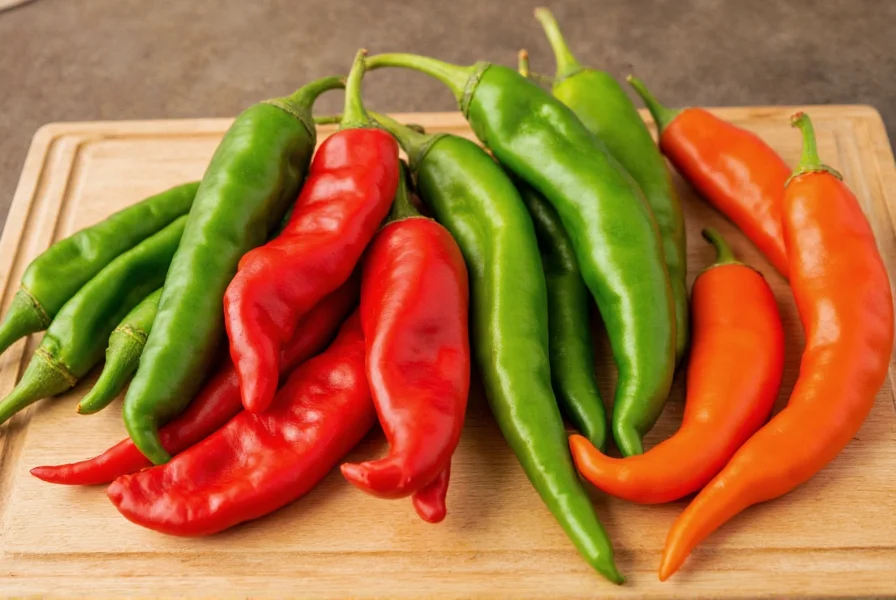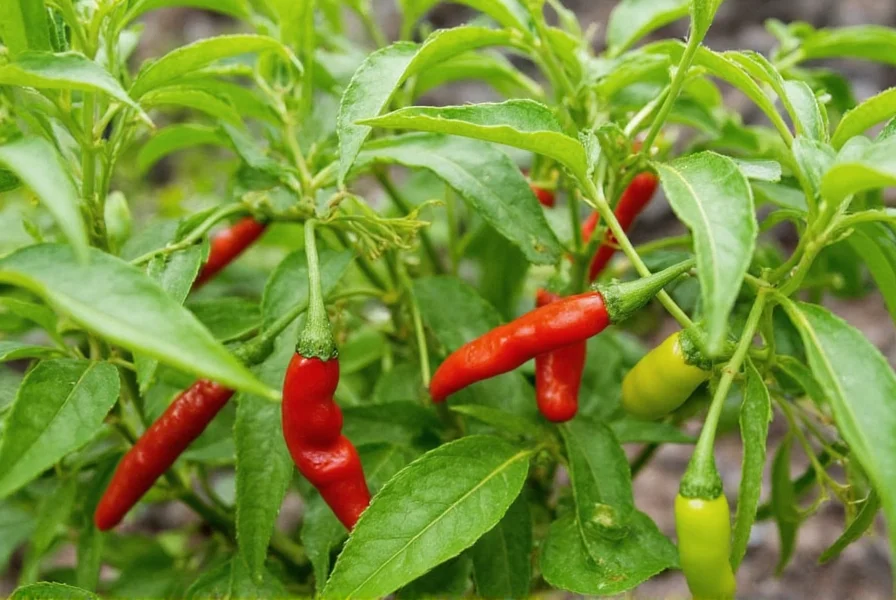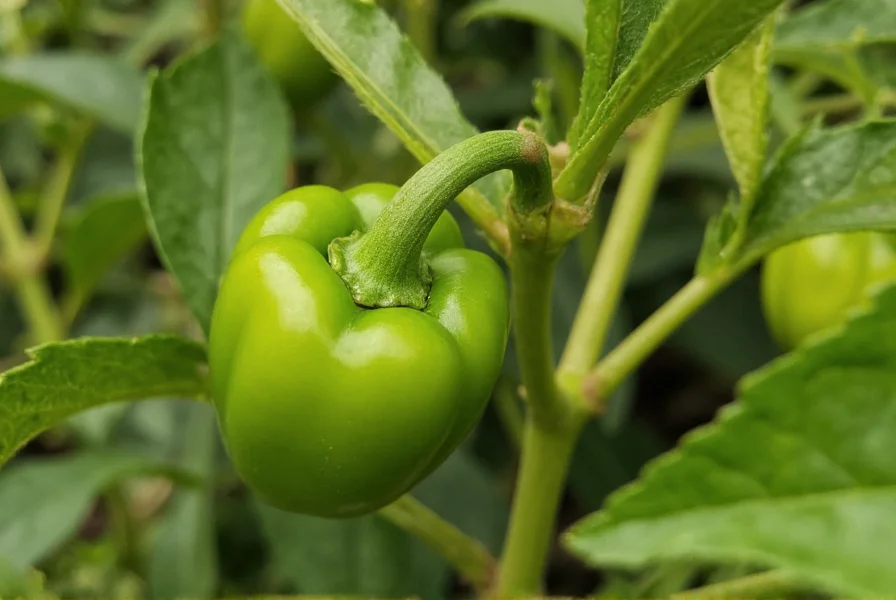When searching for "sw pepper," many home cooks and culinary enthusiasts encounter confusion due to the ambiguous terminology. Unlike standardized pepper names like jalapeño or habanero, "SW pepper" serves as a regional descriptor rather than a botanical classification. This comprehensive guide clarifies what the term actually means, explores the specific pepper varieties it encompasses, and provides practical information for selecting and using these essential Southwestern ingredients.
Understanding the SW Pepper Terminology
The "SW" in sw pepper stands for Southwest, referring to the Southwestern United States region including New Mexico, Arizona, Colorado, and parts of California and Texas. This area has developed distinctive culinary traditions where specific chili peppers play starring roles. The term emerged commercially to describe peppers suitable for Southwestern-style cooking rather than denoting a single botanical variety.
Common Pepper Varieties Labeled as SW Pepper
Several specific chili varieties fall under the SW pepper umbrella, each with unique characteristics:
| Pepper Variety | Scoville Heat Units | Flavor Profile | Common Uses |
|---|---|---|---|
| New Mexico Chile | 1,000-2,500 | Earthy, slightly sweet, smoky when dried | Red and green chile sauces, stews |
| Anaheim Pepper | 500-2,500 | Mild, grassy, slightly tangy | Stuffed peppers, roasts, salsas |
| Hatch Chile | 1,500-4,000 | Complex, fruity, variable heat | Specialty dishes, seasonal cooking |
| Poblano Pepper | 1,000-2,000 | Rich, earthy, mild heat | Mole sauces, chiles rellenos |
Characteristics of Southwest-Style Peppers
What unites these various peppers under the SW pepper designation? Several defining characteristics make them essential to Southwestern cuisine:
- Heat Level: Most SW peppers range from mild to medium heat (500-4,000 Scoville units), making them versatile for everyday cooking without overwhelming spice.
- Flavor Complexity: They offer earthy, slightly sweet notes with subtle smokiness, particularly when roasted or dried.
- Culinary Adaptability: These peppers work equally well fresh, roasted, dried, or smoked, providing multiple preparation options.
- Regional Significance: Many varieties like Hatch chiles have strong geographical ties to specific Southwestern growing regions.

Using SW Peppers in Your Cooking
Understanding how to properly select and prepare SW peppers elevates your Southwestern-inspired dishes:
Selecting Quality Peppers
When shopping for SW peppers, look for firm, glossy skins without wrinkles or soft spots. The best specimens feel heavy for their size with vibrant coloration. For fresh Anaheim or New Mexico chiles, deep green indicates youthfulness while redder varieties should show rich, uniform color.
Preparation Techniques
Southwestern cooking often features roasted peppers, which enhances their natural sweetness while adding complexity:
- Char peppers directly over gas flame or under broiler until blackened
- Place in covered bowl for 10 minutes to steam and loosen skins
- Gently peel away charred skin while preserving flesh
- Remove seeds for milder flavor or retain for additional heat
Growing Your Own SW Peppers
Gardeners interested in cultivating authentic Southwestern peppers should consider these factors:
- Climate Requirements: These peppers thrive in hot, sunny conditions with well-draining soil. They need 60-90 warm days to mature.
- Popular Cultivars: 'New Mexico No. 6' and 'Heritage 6-4' for traditional New Mexico flavor; 'California Wonder' for Anaheim-style peppers.
- Harvest Timing: For green chiles, harvest when firm and glossy; for red varieties, allow to fully ripen on the plant.

Substitutes When Authentic SW Peppers Aren't Available
Outside Southwestern regions, finding authentic SW peppers can prove challenging. Consider these practical substitutions:
- For New Mexico chiles: Use guajillo peppers (dried) or substitute with mild Anaheim peppers
- For Hatch chiles: Combine Anaheim peppers with a small amount of jalapeño for heat variation
- For roasted green chiles: Poblano peppers provide similar texture and moderate heat
- Dried alternatives: Ancho (dried poblano) or New Mexico dried chiles work well in sauces
Preserving the Southwest Pepper Flavor
To enjoy SW pepper flavors year-round, proper preservation techniques matter:
- Freezing: Roast, peel, and freeze whole peppers in airtight containers for up to 12 months
- Drying: String fresh peppers and air-dry, or use a food dehydrator for traditional ristras
- Canning: Preserve roasted peppers in vinegar-based solutions for refrigerator pickles
- Freeze-drying: Modern method that preserves flavor and texture exceptionally well
Conclusion: Embracing Authentic Southwest Flavors
While "sw pepper" isn't a single standardized variety, understanding the regional peppers it represents unlocks authentic Southwestern cooking. By recognizing the specific varieties included under this umbrella term—New Mexico chiles, Anaheim peppers, Hatch chiles, and poblanos—cooks can select appropriate ingredients for traditional recipes. The moderate heat levels, earthy flavors, and culinary versatility of these peppers make them indispensable for creating genuine Southwestern dishes, whether you're preparing classic green chile stew, stuffed peppers, or complex mole sauces. When shopping for SW peppers, focus on freshness, proper preparation techniques, and understanding the subtle differences between varieties to achieve the most authentic results.











 浙公网安备
33010002000092号
浙公网安备
33010002000092号 浙B2-20120091-4
浙B2-20120091-4